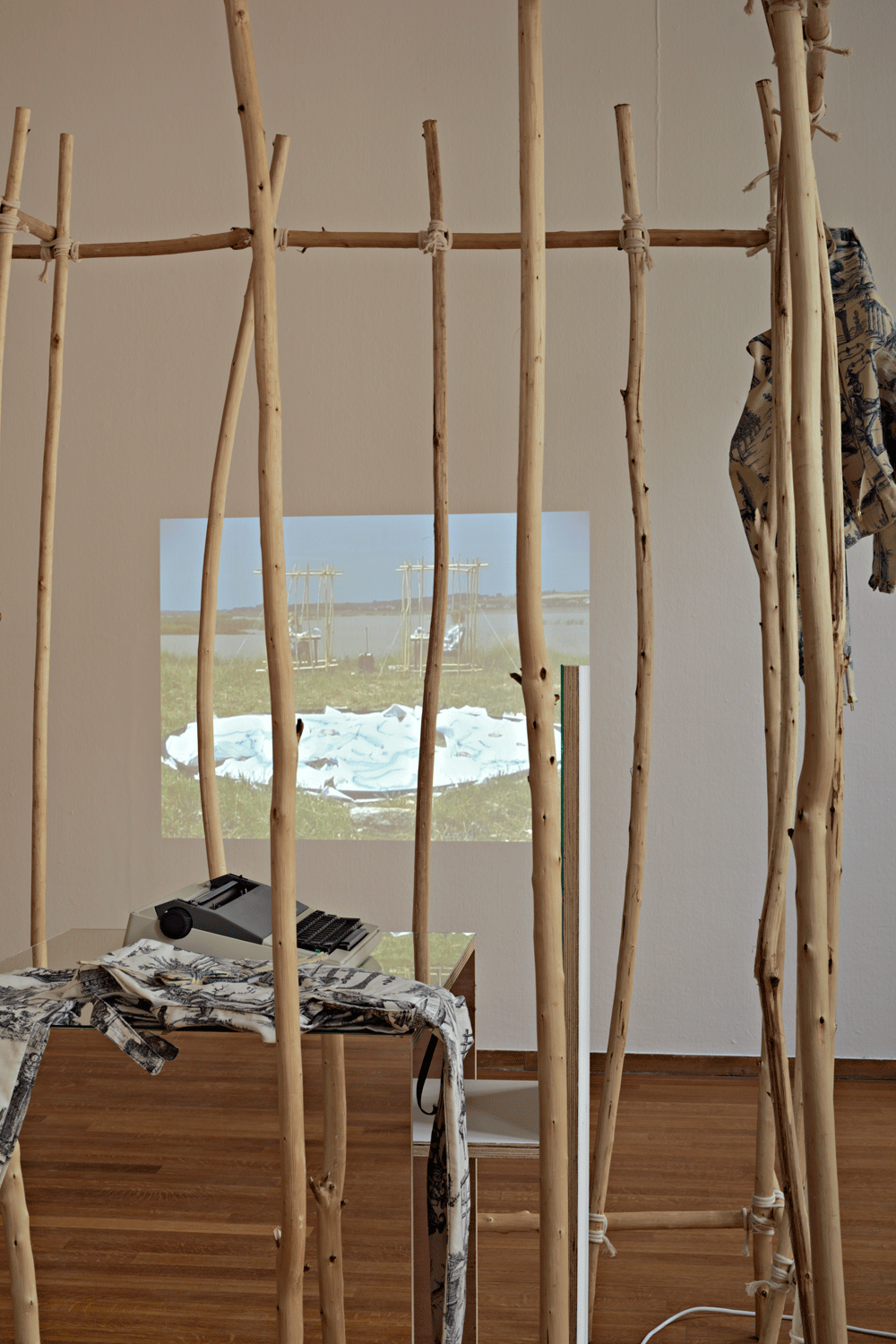Madame Realism
Marres Centre for Contemporary Culture
Marres Centre for Contemporary Culture

In Lynne Tillman’s 1988 short story ‘Madame Realism: A Fairy Tale’, the title character wakes up to find herself transformed into an art catalogue: ‘As she studied herself Madame Realism mused, I am a compendium, a list, a detailed enumeration, a register.’ Madame Realism is a recurring fictional feminist character in Tillman’s writings – self-referential, hyper-analytical and prepared to navel-gaze her guts out. She was also the absent hostess of a group show named in her honour, comprising works by 17 female artists at Marres Centre for Contemporary Culture in Maastricht.
In 2006, the Marres Centre for Contemporary Culture, which is housed in an 18th-century former residence of the Marres family, invited Dutch interior designer San Ming to temporarily transform the ground-floor exhibition space into a chic and witty pseudo-private interior, conjuring a dandy in his self-orchestrated habitat. For ‘Madame Realism’, curator Lisette Smits re-invoked the dandy’s spirit, testing its limits within feminism and reflecting on the notion of the interior as a potential form of social critique. The exhibition did not provide a feminist answer to the male dandy; rather, it turned the dandy’s secluded universe of aesthetic sophistication inside out, presenting the viewer with a literally unheimlich sense of home. The exhibition presented a harsh interior of raw and often questionable elegance, as if Madame Realism had, literally, just brought her guts to the table at a dinner party.
Forty-nine works – neither the dandy nor Madame Realism has heard of ‘less is more’ – were spread out over two floors, including the stairwells and hallways. The ground floor playfully set a stage for an imaginary living space in which Amelie von Wulffen’s daybed (Untitled, 2007), a wooden structure with a gaudy pastel-coloured painted surface, took a central place. In the context of this meta-interior, Von Wulffen’s piece may have reminded some viewers of a psychoanalytic setting, yet this sofa suggested that it didn’t need to serve anything other than contemplation of itself. The interior as first and foremost a mental space was also manifest in the work Brain (2007) by Michaela Meise. A wooden geometric form referencing Constructivist design, it could have been the architectural model for a dysfunctional house (no doors or windows) loosely shaped after a brain, alluding both to the idea of the psyche as our own interior and to Virginia Woolf’s claim for a space for female artistic and intellectual production. Its installation in Marres’ so-called winter garden, where its geometry subtly fused with the black and white patterned tile floor, suggested that our inner thoughts affect the exterior world, and vice versa. In a similar vein, Kitty Krauss’ Untitled (2008) left a permanent impression on the building’s interior – at least for the duration of the show. Starting out as a block of frozen black diluted ink, a light bulb inside the ice-block accelerated the sculpture’s own degeneration, eventually leaving a black puddle on the wooden floor.
Upstairs, Ruth Buchanan’s Sculptor (2010–11) reflected the complexity built up by the patchwork of objects and ideas on the ground floor. The video, consisting of fragments of a New Zealand television broadcast from 1981 in which a female artist is interviewed within her exhibition of clay sculptures, could be watched on either side of a mirror. Combined with a sound recording of a text written and read by Buchanan, the conversation between the artist and the interviewer created a mediated experience of the filmed space and the work on display; Buchanan’s stream of spatial consciousness carried the filmed works into the temporal space of the viewer’s experience. Sculptor was a self-referential source of inquiry, but without ever becoming over-analytical, or worse, boring. It reminded me of the story of Madame Realism waking up as an art catalogue: ‘It dawned upon Madame Realism – in fact it was impressed upon her – that explanations were as complex as what they are meant to explain.’
























